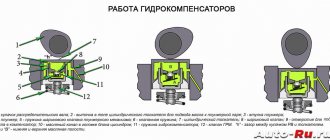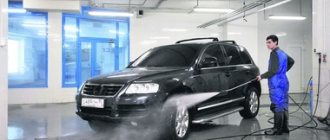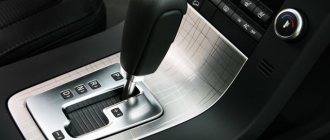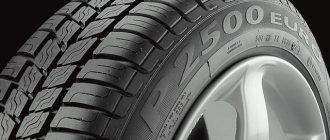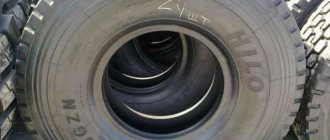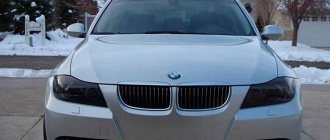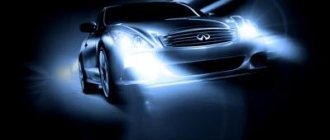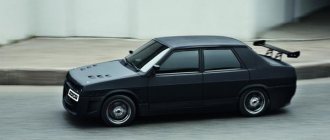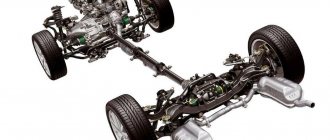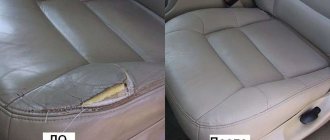Long gone are the days when car owners, in order to perform tuning, had to use mechanical intervention to change individual components of the structure. Now everything is a little different. In order to change unsatisfactory parameters of the engine and some systems, you must have special equipment and a laptop with you. Probably every owner of a modern car is interested in knowing how chipping of a car engine is done?
Electronic control unit
The electronic control unit is responsible for the entire operation of the engine and gearbox.
Almost all modern car models, especially foreign cars, are equipped with an ECU. It is responsible for the operation of the engine and the associated gearbox. The unit's operating program contains a description of the processes by which it operates. Such software analyzes the current engine parameters and adjusts them in the future. Gaining access and changing settings is what is called chipping the engine.
The process of flashing a car engine
At first glance, flashing a car engine seems like a simple procedure. I connected to the control unit via a special cord, selected the appropriate firmware and the process started. But in reality, if you want to achieve the expected result, you will need to work and spend more than one day of time.
The first thing the process of flashing a car engine begins with is determining the purpose of flashing (fuel savings, increasing power or modifying the unit). To carry out this procedure, you will need a desktop computer or laptop (most often) with previously configured software and a special cord for connecting to the OBD port of the car.
Depending on the make and model of the car, the control unit can be located differently, in front under the panel, outside under the hood, under the seat, or even in the trunk of the car. But most often it is located in the front of the car, this is both convenient and accessible for flashing the car engine. It is better not to describe the process of flashing a car engine, reading, modifying and refilling, since it is different for each make, model, and even year of manufacture or submodel of the car. The main stages of flashing a car engine are adjusting the factory firmware and testing the results of the modification.
It would not be superfluous to take measurements before flashing the car’s engine, that is, its acceleration dynamics, fuel consumption and other parameters, and carry out a similar procedure after chip tuning the engine. In this case, it will immediately become clear whether there are positive results from such engine flashing or whether the performance has only worsened. You should never rule out the case when you turned to a bad specialist and instead of improving the parameters, they will only get worse, and the shortcomings of engine flashing will kill the unit and components over time.
Chip tuning technology
First, you need to download the existing firmware version from the car, and then modify it as necessary. And it takes quite a long time to write it back.
Sometimes, in order to complete the work and perform all the necessary manipulations, you have to remove the control unit. Therefore, special locksmith tools are required.
The object for modernization, as you may have already understood, is the ECU; all main actions are performed directly with it.
The latest ECUs are produced without an external flash memory unit; the program itself is implemented directly into the processor memory. But early versions are still equipped with external memory; naturally, it is necessary to collect all the information about a particular case in advance.
The control program consists of a bootloader, it controls the startup process and firmware update, the main motor control program and calibration programs.
When using a bootloader, you can update all components of the control unit. If errors occur after installation, you must open the new software with a calibration editor, for example, “CTPro”, and save it, and then try to write it to the control unit again.
But there is also a universal version of the programmer, which itself updates the on-board computer without the participation of a wizard, for example, “CombiLoader”. This program allows you to edit the software through “Chip Tuning Pro” if necessary. But unfortunately, it does not fit all ECUs.
It should be noted that the chip tuning process is quite complex and time-consuming. Most often, the re-chip process takes about 2–4 hours for an experienced tuner. But if a newbie gets down to business, the procedure can drag on for a long time. To understand the whole process, if you don’t have some experience, it will take at least several months.
WHAT IS CHIP TUNING OF A NISSAN AND INFINITY CAR ENGINE?
REFLASHING, CHIPTUNING, REFLASH, FIRMWARE, CHIP, CHIP, ECU REPROGRAMMING?
From English
the words “Chip” - microcircuit and “Tuning” - setting, adjustment. Engine chip tuning is the best available way to increase power and improve vehicle dynamics without engine modifications, by changing program parameters (firmware, software) in the electronic “brains” (ECU - electronic engine control unit, English ECU - Engine Control Unit). The serial firmware of the injector “brains” is strongly constrained by toxicity standards (Euro 2, 3, 4, 5) and has a certain reserve for optimizing engine operation, increasing power and torque, maximum speed and speed. Using this reserve to improve dynamics and reduce vehicle fuel consumption by changing the ECU software is called chip tuning.
WHY DO YOU NEED A REFIRMING OF CAR “BRAINS”?
Factory firmware of domestic (and many foreign) cars is often very far from perfect, and sometimes there are outright defects: sluggish dynamics, failures, unexpected engine stops in different modes, floating speed, uncertain start-up at low temperatures. If this is a consequence of an error in the program, it is possible to eliminate the malfunction only by programming the ECU (flashing, chipping, chipping).
If the catalyst, oxygen sensor, EGR system or particulate filter fails, the cost of repairs and spare parts exceeds the price of firmware (chip tuning) several times. In addition, the Euro 3 and Euro 4 systems installed on most cars are not designed for low-quality domestic fuel, and this problem can only be solved with the help of firmware.
WHO MAKES THESE FIRMWARE? WHICH MANUFACTURERS CAN YOU TRUST?
Initially, firmware manufacturers appeared where the model of a particular car was produced geographically. As information about ECU programming spreads, a market for firmware correction services has formed. The most famous foreign software manufacturers are Chiptuning.com, Upsolute.com, Chip-tuning.de. In the CIS and Russia, the ECU reprogramming service appeared very soon after the advent of computer-controlled injection cars, the creation of devices for flashing brains and programs for changing calibration data. Initially, they were quite accessible and firmware calibration began to be done in every garage, but as programming and calibration technologies became more complex and more expensive, the number of such chiptuners decreased. To date, in the CIS there are several manufacturers of high-quality and well-proven software for car ECUs: Pauluschip.ru, ADACT.ru, SMS Software, Chipsoft.ru, Chiptuner.ru.
WHAT IS CHANGING? HOW MUCH HORSEPOWER WILL BE ADDED FROM CHIP TUNING?
How many horses will be added after chiptuning? This is the most common question asked by car enthusiasts. An accurate answer to this can only be given by measurements on a power roller stand, provided that the measurements are taken BEFORE and AFTER re-flashing the brains. The cost of one such power measurement is above 3,000 rubles and there are very few places where it can be done due to the high cost of measurement equipment. Many tuning companies make programs specifically for the power stand and the maximum increase in horsepower. But such tuning often does not add comfort to driving. And the race for power results in jerks and jerks in various driving modes. Our programs are not for sports cars. They are focused specifically on comfort in driving a car: elimination of factory software errors, elasticity, reliable starting at any temperature, absence of dips and twitching, sluggish acceleration and automatic transmission hesitations, excessive fuel consumption due to non-optimal fuel-air mixture compositions.
In addition to getting rid of the glitches of the factory firmware, depending on the tasks, chiptuning can achieve: elasticity of engine operation, smooth and smooth traction, comfortable driving; increase in power and torque from 7 to 15%; improving vehicle acceleration dynamics; increasing maximum speed; disabling lambda probes, catalyst, adsorber, get rid of Euro3 or Euro4; eliminating the “thoughtiness” of the automatic transmission (automatic transmission), jerking when changing gears; on particularly “gluttonous” engines - some reduction in fuel consumption.
WHAT CHANGES IN THE PROGRAM ITSELF (IN THE CHIP)?
Depending on the car brand, the firmware changes from 50 to 1000 calibrations that affect engine operation. The main differences are in the calibration of the ignition timing, the composition of the fuel-air mixture, winter engine start parameters, and others. The chip itself is programmed into the ECU via the diagnostic connector without soldering.
HOW DOES CHIP TUNING AFFECT ENGINE LIFE?
Chip tuning can increase the resource of the power unit by optimizing engine operation, eliminating factory program errors, eliminating excessive leanness of the fuel-air mixture in power modes on Euro 3 and Euro 4 systems, and more accurately calculating the required ignition timing. In addition, the firmware has been tested on Russian fuel, the quality of which foreign automakers often do not take into account.
HOW MUCH WILL FUEL CONSUMPTION INCREASE?
Fuel consumption during flashing most often decreases or remains at the same level or increases slightly. This is achieved by changing the calibrations of the OZ, moving away from the stoichiometric compositions of Euro 3, Euro 4. Dynamic acceleration will no longer require stomping on the gas pedal, thereby also reducing the load on the engine.
HOW MUCH TIME DOES IT TAKE AND HOW MUCH DOES CHIP TUNING COST?
Chip tuning usually takes 30 minutes. From 6,000 rubles, diesel cars from 10,000 rubles.
MY CAR IS UNDER WARRANTY, WHEN PASSING THIS AND OTHER CASES, CAN I NOTICE A REFLASHING?
Firmware identifiers, which are visible from diagnostic equipment, are not specifically changed in tuning firmware. In the event of controversial issues, the guarantee providers will be required to prove the impossible - that it was you who changed the program.
IF YOU DON'T LIKE SOMETHING, CAN YOU RETURN EVERYTHING BACK TO FACTORY SETTINGS?
You can return to factory settings at any time; the “native” firmware of your car is read and stored in the database. To understand how the car’s behavior has changed after chip tuning, a 31-day test period of use is provided. During this time, you can try different firmware versions, or refuse chip tuning and get your money back.
WHAT ARE THE GUARANTEES FOR CHIPTUNING?
The operation of our programs is guaranteed for the entire service life of the vehicle. We use firmware only from well-known domestic manufacturers: N****N (test programs (manufacturer programs used for certification) and from different regions. New vehicles sold in different markets have different software), Paulus-chip, NP ADACT, SMS software, Chipsoft. All programs (firmware) have original technical support and updates. Reviews about the driving qualities of a specific firmware can be read on various Internet forums. You can always contact the author of the firmware, establish the legality of the purchase, and get advice. The warranty does NOT APPLY to defective cars and cars with installed gas cylinder equipment (LPG), zero (low) resistance filters, enlarged throttle valves, non-standard receivers, camshafts!
Author of the article Sergey Stepanov
The process itself using the example of Hyundai Accent AT-5
We are looking for firmware, selecting calibration
This model has a Kefico electronic unit installed; its flashing can be done in two ways. In the first case, modification will be required - soldering resistors, and in the second case, without modification, through the OBD-II diagnostic connector (most often used).
You will need Matizovskaya calibration, and a KIA Flesher is suitable for flashing the firmware, preferably complete with an Orion adapter. But this software only works on Windows XP (or at least virtual XP); newer versions are incompatible with it.
Setting up the port
- After starting Windows XP, unpack the chip tuning software and drivers for the K-line adapter.
- The next step is to install the driver for the adapter and check the KIA Flesher. We specify the COM-1 port in the settings and proceed to loading the calibration into the control unit.
Preparing equipment and vehicle
- It is important that the laptop stands on level ground and does not fall during operation; it is also necessary to connect it to a power supply.
- The next step is to connect the adapter block to the diagnostic port with the ignition off.
- The last thing you need to do is connect the adapter to the USB port of your computer and start Windows. Turn on the ignition.
Calibrations
- Launch KIA Flesher and select the error section.
- It is important to somehow save all the information there, you can write it down and then delete it. Then select “Download” and specify the calibration file. We wait about 25 minutes. After loading is complete, you must turn off the engine and wait 5 minutes. You can disconnect the adapter and the computer.
(If an error message appears during boot, turn off the engine and start over.)
- After 5 minutes everything is ready, you can start and check.
It is recommended that you have the factory calibration with you, just in case, which is most often called ADE1I52.
What are the pros and cons of reflashing a car engine?
As with any process of changing and tampering with factory settings, there are two sides, positive and negative. Experts will immediately talk about the advantages of flashing a car engine and will praise them as much as possible, but they are often reluctant to talk about the disadvantages, since the consequences can be unpredictable.
First, let's look at the positive side of flashing a car engine. Today is considered the time of engineered cars and it is difficult for a modern person to imagine a car without an on-board computer or control system. The ECU (electronic control unit) most often needs to be reflashed to improve the dynamics parameters.
Advantages of reflashing a car engine:
- improving the dynamic characteristics of the car, increasing the sensitivity of the accelerator pedal, as a result, the process of controlling the car is easier;
- the acceleration of the car on the highway is much better, which allows you to maneuver in traffic;
- those who bought a car new from the showroom get used to it after a few years and complain that the car becomes slow, does not have enough power and is not at all the same as when they bought it. In this case, flashing solves such problems;
- reflashing a car engine is considered the simplest and at the same time quite effective way to improve the dynamic characteristics of a car, without intervention or engine modifications;
- reflashing the engine allows you to adjust the unit and the car as a whole to a modified system, non-standard hardware, turn off the catalyst, add reserve horses (often many engine manufacturers come with a good supply of horses, which they do not fit into the technical characteristics of the car).
This is a minimal list of the advantages of reflashing the engine and how the car’s parameters can be improved. Still, there are downsides, and experts often don’t really want to talk about them. For some machines this is less harmful, but for others it is critically lethal. According to the generally accepted rule, the more electronics and the more complex the machine mechanism, the more significant the results of engine flashing will be.
The main disadvantages of flashing a car engine:
- The first and most common disadvantage of flashing a car engine is the breakdown of the unit itself. When adding power, they often reflash the fuel control system; in this case, the mixture becomes “rich” or “lean” and not every specialist can adjust it programmatically. When setting up the system, you need to know well the characteristics of your car, its mileage and the nuances of the configuration, but not all specialists will do this, because this is a waste of their time. As a result, you can get a lot of troubles, from a clogged catalyst to burnout of valves, piston and crankshaft wear;
- any re-flashing of the engine reduces its service life by at least 4%;
- Reflashing the engine to reduce fuel consumption also entails a deterioration in the operation of the unit and will not always show improved fuel consumption. Some “handicraft” specialists are thinking of reflashing the on-board computer, thereby shifting the savings indicators by a certain division. Then the indicator on the screen will show fuel economy, but in fact the consumption will remain the same or, worse, even increase;
- the price of such engine reflashing depends on the make and model, and an inexperienced fan of light tuning can cost at least 5% of the cost of the car;
- disabling individual components of the car by flashing the engine, usually this concerns restriction sensors and the catalyst. It is highly not recommended to disconnect the catalyst sensor, since you simply will not know if it breaks down, and the car will significantly lose power or stop starting altogether. A clogged catalyst can not only lead to clogging of the exhaust system, but also completely disable the engine. As a result, valves may burn out or wear may appear in the camshaft;
- The most unpleasant disadvantage that can occur after reflashing the engine is the failure of the automatic transmission, it has its own control unit and the non-synchronous operation of the components will quickly damage the switching system and gears. Many people know that automatic transmission repair is not cheap, and sometimes even more expensive than engine repair.
Such a minimal and unpleasant list of disadvantages of flashing a car engine exists for every make and model. Therefore, it is worth considering several times whether it is worth reflashing the car engine and what consequences should be expected. If you decide to take such a step, then do not be lazy to choose a good specialist with a proven reputation - this will be a guarantee that in the future such improvements will not come to the side of the car and will not affect the financial part.
Difficulties of re-chip
At first glance, it may seem like there’s nothing complicated about it: you go into the program and reconfigure it for yourself. But it’s not that simple; in fact, it is precisely for such situations when everyone wants to change something in the ECU that there is protection against hacking. The role of protection is played by the checksum, which does not converge when the firmware parameters are changed. In this case, the engine switches to a safe operating mode, or even stops responding to commands altogether. A message about an error will appear on the dashboard and this will end all your attempts to upgrade the engine.
How to avoid problems that arise during the flashing process?
To avoid difficult moments, it is important to chip the engine using specialized equipment and use only high-quality and proven firmware. High-quality software always provides for checksum adjustments and the ability to reflash the chip while maintaining the basic settings. In some cases, you can install several control modes at once, and subsequently switch between them, but this requires installing an additional program called “Step Power”.
Important! Modern foreign-made machines can have a lot of different parameters, and in order not to look for the necessary tables that need to be replaced, Step Power will come to the rescue.
What should you consider when you want to upgrade your engine?
- The most effective tuning is done immediately after purchasing the car, while it is still new.
- Do not break the factory program until the entire machine system has been diagnosed.
- Find out in advance whether tuning is possible in principle on your ECU. If it was initially blocked from hacking, even with the help of the most advanced equipment, it will not be possible to upgrade it.
- Look for information about the current software on your car; there may be no re-chip required. For some foreign cars, suitable options are very often selected and there is simply nowhere to improve them. In this case, you will waste time and money, and there is also a high probability of errors occurring after the procedure.
Atmospheric chip tuning
Chip tuning of an atmospheric engine is not possible on all cars with this engine, but only with a built-in ECU. In this case, the procedure can increase the value of power and torque by approximately 8–10%. You can check the real increase in power of an atmospheric engine on specialized stands, but, unfortunately, they are not widespread enough here yet; a regular track is also suitable for these purposes.
In conclusion, let’s say that chip tuning is a purely personal matter, only you can decide whether to do it yourself or in a special car service center.
If you have read our article to the end, it means that you are really interested in knowing how to chip an engine; we hope that the material you have read will be useful to you.
Chip tuning: how not to ruin your car? — magazine Behind the Wheel
Chip tuning is steroids for the engine.
And any such drug has its side effects. The modified engine control program improves dynamic characteristics, but the increased load somehow reduces the life of the motor. And not just him. There are a lot of specialized companies and garage specialists offering to invigorate the engine. Their services are in steady demand. For example, only one of the well-known large companies reconfigures up to 3,000 cars per month.
The entire tuning fraternity works according to general laws, and the consequences of interference in the working processes of engines are identical. We will look at the positive and negative aspects of chip tuning using the example of Volkswagen cars - they are most often subject to retuning.
In order not to be scattered, we will focus on the most popular version of chip tuning - when they interfere only with the electronics and do not affect the hardware. We will focus on turbo engines, since reflashing them allows you to increase power and torque by 30–50%. For atmospheric ones, the increase most often does not exceed 10%.
The cream of power
The third generation 2.0 TSI petrol engine (220 hp) easily “swells” up to 315 hp.
Large companies specializing in chip tuning for Volkswagen cars, for example, APR and Revo, take a comprehensive approach to changing the control program, spending a lot of time and resources on it. The result is a good balance between a significant increase in engine performance, maintaining its reliability and level of driving comfort. Chip tuning allows you to enjoy the behavior of an invigorated car not only on track days, but also in the everyday bustle of big cities. Among the bonuses are a reduction in “thoughtfulness” and dampened reactions to pressing the gas pedal, which almost all mass-produced models now suffer from, and improved adaptation to the quality of a specific type of fuel: some companies offer two types of firmware - for example, for 95 and 98 th gasoline.
High-quality chip tuning does not increase fuel consumption. Moreover, in some driving modes, especially if the engine is diesel, its savings are possible: 5–10%. Fantastic? I had the opportunity to measure fuel consumption on a new generation chipped diesel Tiguan. The actual reduction in the mixed cycle was 300 ml (measured using the top-up method using measuring cups). It is explainable. The highest instantaneous consumption occurs in transient and acceleration modes. When accelerating, the chipped engine has more torque at the same speed, and the gearbox holds lower gears longer. The car accelerates faster, but consumes no more fuel than with standard firmware.
Such benefits are difficult to obtain when installing cheap programs for garage workers or “desktop chip” enthusiasts. Usually they add power and torque to the engine in the “on/off” mode (when you press the gas pedal). Calibrators change a limited number of parameters without bothering to check the programs under real road conditions. As a result, the car is more suitable for the race track - it becomes uncomfortable to drive in the city due to the abundance of kicks, jerks and jerks in various modes.
Side effects
There is no free cheese. Even high-quality firmware has a detrimental effect on the service life of the engine and gearbox, let alone cheaper programs. Official dealers have become adept at identifying facts of chip tuning when owners complain about the operation of the power unit, even if a “rollback” to the factory program was previously made. Around February 2020, Volkswagen Group dealers began to massively expose doping enthusiasts.
Converter, particulate filter, EGR
Many “tuners” remove the EGR (exhaust gas recirculation) system from diesel engines.
At first glance, this is a harmless operation, which is partly even beneficial for the engine, since exhaust gases do not pollute the intake. But as engine output increases, such stopping can become extremely dangerous. In modern diesel engines, the recirculation system is responsible, in particular, for heating the intake air. In many cases, tuning and silencing the EGR lead to at least uneven engine operation. A dubious idea is removing particulate filters. Few people will like it when a modern diesel passenger car starts to smell like an ancient KAMAZ. In addition, this operation requires a lot of experience: you need to competently “fool” the control program so that it does not bother you with messages about all sorts of errors. On the other hand, an abandoned particulate filter will clog faster (even with good software, its regeneration intervals are reduced). This means that a critical mass of deposits remaining after burning the soot will quickly accumulate in it.
Due to an increase in the flow of exhaust gases, the neutralizer of a gasoline engine will clog earlier. And this is with a well-designed program. And cheap software can even lead to rapid melting of the neutralizer honeycombs. Therefore, large foreign companies do not touch engine environmental systems at all. After all, they make software for the global market, and emissions standards in many countries are quite strict.
Engine
Due to increased load, any engine experiences a point of general fatigue earlier. The wear of the cylinder-piston group, liners, timing chains and other elements that suffer on a stock engine increases. Cheap firmware significantly increases the risk of detonation due to inadequate fuel supply adjustment. The greatest damage is usually associated with excessive leanness of the air-fuel mixture.
Turbocharger
Increasing the boost pressure greatly affects the health of the turbocharger. Any turbine is designed for the maximum permissible shaft speed. If this threshold is exceeded, either characteristic and irreparable wear of the impellers will begin, or the lubrication system will fail, which is why, with excessive shaft speeds, oil starvation can occur, which has devastating consequences. In some cases, the shaft jams due to overheating, and in others, the oil seals are destroyed. And the turbine dies.
Transmission
It doesn’t matter what type of gearbox is installed on a chipped car, all designs suffer significantly from increased load, since they are designed for a certain level of torque.
With mechanics, first of all, the clutch life is reduced. And if the driver likes to participate in traffic light races, the filling is also given away - synchronizers, gears, bearings.
Robotic boxes, which are structurally similar to conventional mechanics, suffer in much the same way. The resource of double clutch (dry or wet) is reduced by an average of one and a half times. Due to active starts from a standstill, not only gears and bearings quickly die, but also differential housings. Tuning software does not harm the health of mechatronics only.
In automatic machines, when the permissible torque is exceeded, there is not enough pressure in the clutch packs to withstand it. They begin to slip more actively, and wear products quickly kill the remaining elements of the box.
Private consultations
It is difficult to say even approximately how much the service life of components and assemblies is reduced after chip tuning - a lot depends on the specific motor/gearbox pair. There are plenty of examples from real life when successful units “on steroids” live happily ever after - however, with adequate operation and proper care. Activities that are desirable for an ordinary car are critically important for those that have undergone chip tuning: replacing technical fluids at reduced intervals, seasonally checking the condition of radiators, using high-quality consumables and oils.
Among the Volkswagen engines that benefit from chip tuning are, for example, the above-mentioned petrol 2.0 TSI (220 hp) and diesel 3.0 TDI. A couple of twin-supercharged engines do not tolerate retuning well: the previous generation 1.4 TSI (150 hp) and 2.0 TDI (224 hp). All the juice has already been squeezed out of these engines in the standard version.
As for the service life of manual transmissions, a lot depends on the driver’s driving style. Aisin automatic machines tolerate motor “doping” quite well. And the DSG robots were divided into three camps. The weakest gearbox is the DQ200 (7-speed, dry clutch). Its torque resource is almost exhausted. The DQ250 (6-speed, wet clutch) performed much better. The best of all is the DQ500 (7-speed, with a wet clutch): the manufacturer’s solid safety margin allows the engines to achieve the highest performance.
If you decide on chip tuning, I advise you to give preference to famous companies. Each has its own special approach, developments and software. Do not hesitate to be meticulous by asking specialists, and study reviews from car owners. Some companies offer truly universal firmware that allows you to move comfortably in any conditions, while others concentrate on maximum performance on the track - and this means that there will be added discomfort when driving around the city.
High-quality programs usually cost no less than 30,000 rubles. Honest firms immediately warn about all risks and ask you to sign the appropriate paper to confirm that the client is aware of them. Competent service technicians always perform initial vehicle diagnostics, checking the condition of the engine and gearbox. In addition, they give the client the opportunity to cancel the program within 30 days and get their money back.
Measure seven times
Large chip tuning companies take the testing of the software they develop very seriously. For example, American companies spend only a fifth of their time on bench testing (on dynos) of cars with new firmware, and the rest is spent on road tests. At the same time, they use the resources of their dealers around the world, including in Russia, and ultimately prepare several firmwares - for different markets, taking into account the local characteristics of the operation of the machines.
We would like to thank APR Russia for their assistance in preparing the material.
Chip tuning: how not to ruin your car?
www.zr.ru
